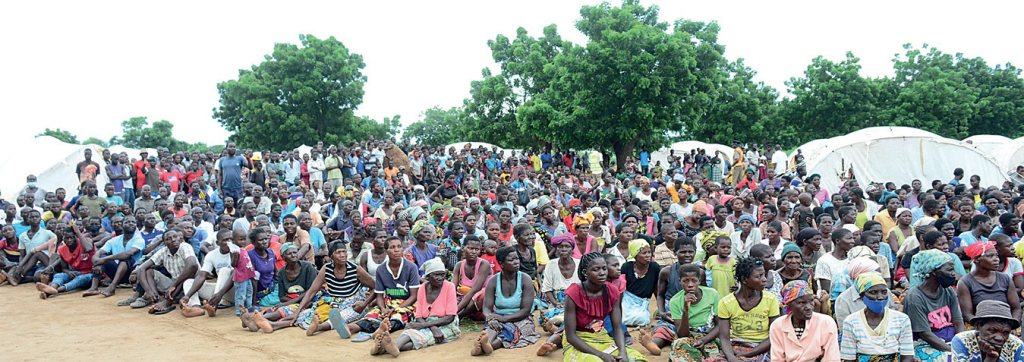Population growth: promise or pressure for Malawi’s future
On July 6 this year, Malawians celebrated 61 years of independence. The day was marked with pride and reflections on a journey from colonial rule to self-determination.
But beyond the flags, parades and speeches, it also drew attention to one of the most defining trends since 1964- population growth.
According to Nation on Sunday analysis of various reports on PHC, Malawi Demographic and Health Survey (MDHS), Integrated Household Survey and National Census of Agriculture and Annual Agriculture Production Estimates Survey, from just over four million people at independence, Malawi’s population has soared to over 20 million.
During the years, the number of households has also increased significantly from 1.1 million in 1977 to nearly four million by 2018. This figure represents a staggering 346 percent increase since the country conducted its first Population and Housing Census (PHC) in 1966, just two years after becoming a republic.
These statistics tell a story of resilience and transformation, but also of pressing challenges that threaten the nation’s vision of inclusive wealth and self-reliance as set out in the Malawi 2063 and the United Nations Sustainable Development Goals (SDGs).

Nation of growing numbers
The PHC, conducted every decade by the National Statistical Office (NSO), has been the most reliable mirror of Malawi’s demographic changes.
In 1977, the census recorded 5.5 million people. That number rose to 7.98 million in 1987, and by 1998, nearly 9.94 million Malawians were counted. In 2008, the figure reached 13.1 million, before jumping to 17.6 million in 2018.
Projections for 2024 put the population at 18 million, and by the time of the next census in 2028, the country is expected to surpass 22 million people.
“The regularity and improved quality of these censuses reflect strong national commitment and enhanced technical capacity,” says NSO commissioner of statistics, Shelton Kanyanda.
He adds that over the years the NSO has moved from simple counts to sophisticated data collection using Geographic Information Systems (GIS) and electronic tools, first adopted in 2018.
But while data has improved, the implications of what it reveals are sobering. More people are living in the same space, putting pressure on land, water, forests and public services. The number of people per square kilometre has risen from 43 in 1966 to 186 in 2018, making Malawi one of the most densely populated countries in Africa.
Progress amid pressure
Not all indicators paint a grim picture. Education has seen remarkable progress. Literacy among those aged five and above has risen from just 17.6 percent in 1966 to 68.6 percent in 2018.
Employment figures have also improved. From a mere 13 percent employment rate in 1987, the numbers jumped to 81.5 percent in 2018, according to NSO records. In health, too, there has been significant progress. The crude birth rate has dropped from 53.6 per 1 000 people in 1977 to 31.3 in 2024. The crude death rate has also fallen from 20.9 to 6.3 over the same period.
“On average, women had 7.6 children in 1977, but now have about 3.7 children, nearly half as many, indicating a shift toward smaller families,” says Kanyanda.
Child mortality rates have also declined dramatically. Neonatal mortality has dropped from 104 deaths per 1 000 births to 24, while infant mortality has declined from 112 to 35 deaths per 1 000 births. The use of contraception has risen. In 1992, about 87 percent of women were not using any form of contraception. Today, 32.8 percent are using contraceptives, with injectables being the most popular method at 31.2 percent.
These improvements highlight the impact of investments in healthcare, education, and family planning. Yet, they also raise the critical question: Is progress happening fast enough to keep pace with population growth?
Growth with inflation
Between 2019 and 2024, Malawi’s GDP at constant 2017 prices grew by about 10.7 percent. GDP at current market prices rose much more steeply, around 142 percent in the same period.
The difference underscores the impact of inflation, which has eroded much of the gains in real economic growth.
While there is a positive trend of expansion, the question of whether economic growth can outpace population growth remains. Malawi’s GDP growth has often been below six percent, insufficient to achieve meaningful poverty reduction in a country where over 80 percent of the population still relies on subsistence farming.
The government has set out a bold development blueprint, Malawi 2063, which envisions the country as an inclusively wealthy and self-reliant middle-income nation. But population growth remains one of the biggest obstacles to this vision.
Governance and policy expert Mavuto Bamusi warns that Malawi’s high demographic growth rate undermines the ability to achieve the aspirations of both the Malawi 2063 and the SDGs.
“The population growth rate is significantly high and exerts pressure on the country’s resources, thereby making sustainable development very problematic,” he says.
Research scientist Nyokase Madise says Malawi’s annual population growth is very high, between three percent and 2.5 percent.
She says: “High population growth is principally due to persistently high fertility, although the average fertility per woman has fallen from seven in the 1960s-1990s to 3.85 per woman in 2022 .
“Because of previous high fertility rates, we have created population momentum.”
The environmental toll
The rapid population increase has not only affected the economy but also the environment.
Already, Malawi has one of the highest rates of deforestation in the world, driven largely by dependence on wood fuel and charcoal for energy.
“High population has had negative effects on environmental resources such as forestry products while energy transition has been too slow to embrace sustainable energy sources, such that deforestation has become the order of the day,” says Bamusi.
He notes that the democratic era has added another layer of complexity.
“Sadly, the population increase has also coincided with the onset of the multiparty dispensation where the democratisation process contributes to misconceptions and misapplications of human rights.
“Rights without responsibilities exacerbate the population crisis and create knock-on effects on environmental and economic resources. Wrong politics is worsening the crisis. It will take strong and developmental leadership to restore the country on the path to sustainable population management for sustainable development.”
Malawi and the SDGs
Malawi’s population dynamics are directly linked to the global SDGs with targets such as ending poverty (SDG 1), achieving zero hunger (SDG 2), ensuring good health and well-being (SDG 3), quality education (SDG 4), gender equality (SDG 5), and climate action (SDG 13) all intersect with population issues.
For instance, rapid growth complicates food security efforts, as agriculture, which employs over 80 percent of Malawians, struggles with land pressure and declining soil fertility.
Healthcare systems face strain as more people require maternal and child services while education faces overcrowded classrooms, undermining quality and environmental goals are undermined by deforestation and land degradation. Unless population trends are effectively managed, analysts warn, achieving both Malawi 2063 and the SDGs will remain out of reach.
Looking ahead
As Malawi prepares for its next census in 2028, the story of population growth is one of both triumph and trial.
For now, Malawi stands at a crossroads. Whether Malawi 2063 becomes a dream fulfilled or deferred will depend largely on how the country navigates its demographic destiny.





